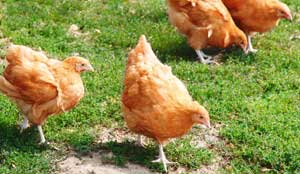To see how Cornucopia rates your favorite poultry brand, access our mobile-friendly scorecard. More information is available in Cornucopia’s report, For the Birds: How to Recognize Authentic Organic Chicken and Turkey.
Background: Organic chicken and turkey
Chicken is a “gateway meat” into organic eating. According to the Agricultural Marketing Resource Center, organic chicken is purchased by more than seven in 10 shoppers.

Compared to beef or pork, organic chicken has a relatively short production cycle and low price premium. The industry leverages an integrated production model, in which one company typically owns and controls multiple stages of the supply chain, including the breeder flocks, hatchery, grow-out flocks, processing plant, feed mill, and marketing.
The organic turkey industry is smaller than that of organic chicken. Despite its size, similar problems of industrialization plague organic turkey production as well.
In the following primer, we answer your questions about organic poultry, draw on our extensive research to uncover critical issues in certified organic chicken and turkey production, and implore consumer investment in the superior management practices of authentic organic poultry farmers.
For more information, read Cornucopia’s report, For the Birds: How to Recognize Authentic Organic Chicken and Turkey.
What makes chicken and turkey organic?
The organic seal dictates strict federal rules and regulations for the production and farming of chicken and turkey products.
100% certified organic means that the chicken or turkey product is:
- Non-GMO;
- Produced without antibiotics or synthetic hormones;
- Produced without the use of synthetic pesticides;
- Produced without synthetic fertilizers;
- Raised and produced on certified organic feed and land. This means that no synthetic pesticides or fertilizers may be used on any land, such as pastures or silvopasture, used to raise the poultry;
- Produced with strict rules on parasiticide use;
- Slaughtered and processed in a certified organic facility.
Outdoor runs and pasture offer birds the opportunity to forage. When given the opportunity, chickens will spend a majority of their active time engaged in this natural behavior, which consists of pecking, scratching, harvesting seeds, and eating insects. When chickens are unable to express their true nature, welfare problems such as feather pecking can arise.
What do organic chickens and turkey eat?
Organic poultry eat organic feed. This means that the grains, soy, and pastures they forage on must be certified organic.
Poultry require methionine in their diets. The cheapest way to supply this essential amino acid is via feed supplementation with synthetic methionine, a very controversial practice.
Synthetic methionine can be used as a growth promoter in poultry production, although organic regulations limit the amount allowed for organic birds. (7 CFR § 205.603(d)(1))
Some research shows that legitimate intensive pasturing can meet a bird’s methionine needs. Other sources of feed, such as blood meal, fish meal, crab meal, corn gluten meal, and sunflower seed meal, can also meet the methionine needs of poultry. Synthetic methionine remains the cheapest alternative, and it is widely used on industrial-organic poultry operations.
Are organic chickens and turkeys “vegetarian fed”?
The reality is that neither chickens nor turkeys should be vegetarians! These birds are opportunistic omnivores and their natural diets are composed of seeds, grains, insects, and even small vertebrate animals.
A bird that is raised on pasture or silvopasture will forage for a wide variety of feedstuffs, coming closest to what would be its natural diet.
What is the difference between organic and “all natural” chicken and turkey?
Organic poultry is produced under federally enforced standards, subject to third-party oversight.
In contrast, “all natural” means incredibly little. In fact, many ingredients, additives, and processing aids that are considered “natural” are not permitted for use in organic production.
What is the difference between organic and free range?
All organic poultry are free range but not all free range poultry are organic.
In fact, the “free range” label on its own is very misleading. Chicken and turkey labeled “free range” do not necessarily come from birds that ranged freely outdoors. Most free range chickens and turkeys are crammed into large open-floor houses by the tens of thousands.
The term “cage free” does not typically apply to broilers because, even in conventional agriculture, broilers are not confined to cages.
Are organic chicken and turkey healthier?
Organic chicken and turkey offer many benefits to consumers:
- All poultry must have year-round access to the outdoors with some exceptions. All organic poultry are also “free range,” meaning they are never confined to cages.
- Organic poultry is raised without pesticides and synthetic fertilizers; all agricultural components of the feed, including kelp and supplement carriers, must be 100% certified organic.
- The routine use of synthetic internal parasiticides is not allowed.
- Aside from vaccinations, no medication is allowed in the absence of illness (in conventional agriculture, low-dose antibiotics are often fed as growth promoters and to help prevent diseases which are common in the overcrowded and stressed conventional birds).
- No re-feeding manure or feeding urea is allowed in organic poultry production.
Healthier, happier birds tend to be more productive and produce higher-quality food. And consumers are often willing to pay greater premiums to support these high-welfare systems. In this case, you truly do get what you pay for—but how do you find the most ethical farmers?
Cornucopia’s Organic Poultry Scorecard will help discerning consumers find the very best organic chicken and turkey.
Animal welfare of organic chicken and turkey
Unfortunately, both the conventional and organic agricultural standards fall short when it comes to protecting and promoting the welfare of poultry, and reflecting both the natural behavior and complex social structure of this species. In the absence of needed safeguards, overcrowding and confinement put stress on flocks.
The federal protections afforded to livestock through The Humane Slaughter Act, Animal Welfare Act, and the Twenty-Eight Hour Law all exclude chickens and turkeys.
The organic rules do not account for many poultry welfare concerns. Chickens and turkeys do not benefit from the same organic requirements provided to other livestock, such as feeding areas without crowding or food competition. The Trump administration withdrew the Organic Livestock and Poultry Practices rule, which would have added standards for poultry.
Existing poultry rules do not dictate any specific stocking requirements for birds, either indoors or outdoors. The regulations don’t require that outdoor areas are vegetated. Physical alternations such as beak tipping are allowed under the organic standards, as long as they are performed “…as needed to promote the animal’s welfare and in a manner that minimizes pain and stress.” (7 CFR § 205.238(a)(5))
Many producers raise chicken humanely, encouraging their chickens and turkeys to forage outdoors and are dedicated to giving the birds true outdoor access from as young an age as possible. The very best producers meet labeling requirements for “pasture raised” poultry as well as organic.
For more detailed information on animal welfare for chickens and turkeys, read our report, For the Birds: How to Recognize Authentic Organic Chicken and Turkey.
Differentiating truly organic farmers from industrial-organic imposters
The majority of organic chicken and turkey produced in the U.S. comes from industrial-organic operations. While these birds receive organic feed and are not given antibiotics or other pharmaceuticals, they typically live in crowded conditions devoid of legitimate outdoor access. In addition, strains of chickens and turkeys popularized in the conventional marketplace are also commonly used by organic producers. These strains are often fast growing and have health and behavioral issues associated with that abnormal growth.
Authentic organic producers go above and beyond the minimum organic regulations. These producers are dedicated to outdoor-centered poultry production that supports animal welfare and care for the environment. Cornucopia’s Organic Poultry Scorecard helps consumers identify the very best brands in the meat case.
Consumers who buy from Cornucopia’s top-rated poultry farmers invest in their superior management practices. Your support ensures there is a marketplace alternative to cheap, industrial-organic poultry. The cost of authentic organic poultry is markedly higher than factory-farmed imposters, a price tag that reflects the cost of feeding the animals more expensive certified organic grain and the time and labor required to raise them humanely.
Factory operations cut costs by externalizing them. For example, low animal welfare is “paid for” by the birds themselves, by eaters when the nutritional value of the final product is impacted, and by the local ecosystem when soil is left bare and watersheds are polluted with runoff from manure. If you have access to ethically raised, organic poultry, your dollars serve as an investment in our collective health and the future of the planet.
What about pasture raised poultry that isn’t certified organic?
Consumers in certain geographic areas may notice there is greater availability of “pasture raised” poultry than high-quality certified organic poultry. Industrial operations typically own a dedicated processing plant, but small and mid-sized operations often lack access to certified organic slaughtering and processing facilities. The expense of transporting birds for processing, coupled with the cost of organic certification itself, can be prohibitive for smaller producers.
These factors make it more difficult for certified organic, pasture-based poultry producers to succeed in the marketplace. Many small or diversified farms market their poultry directly to customers who know their farming practices.
Although Cornucopia always recommends certified organic food, we recognize that authentic organic poultry options can be scarce. A local, non-certified poultry operation may employ some excellent management practices. But without reliable third-party certification, consumers are left to decide for themselves if such an operation meets their needs.
Cornucopia has created a Do-it-Yourself Guide to Choosing The Best Chicken and Turkey to help concerned consumers. The guide helps you ask farmers the kinds of insightful questions that an organic certifying agent would ask when inspecting an organic farm. Based on farmers’ answers, you can ensure you are rewarding the most ethical farmers who care for their animals and the land.

